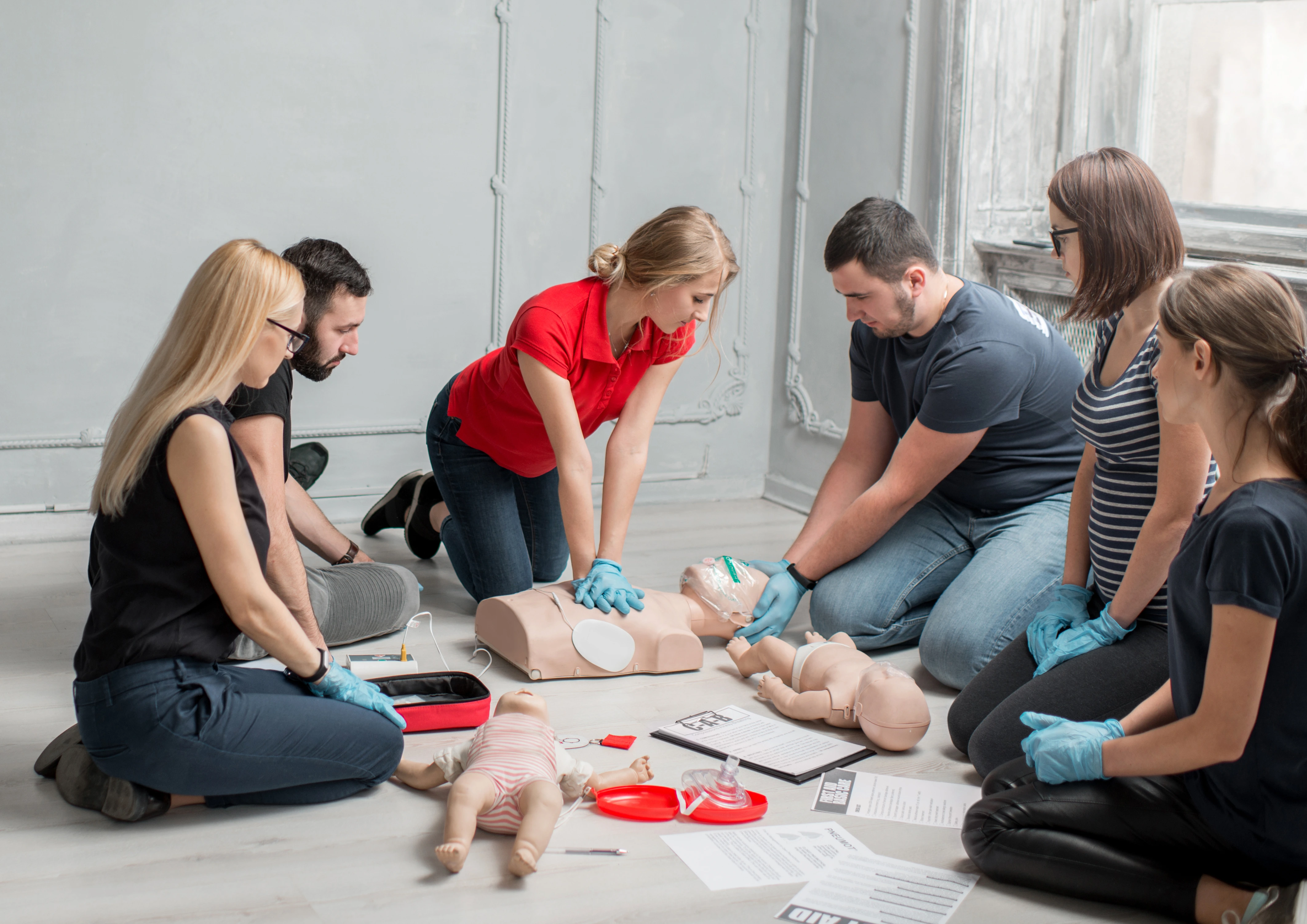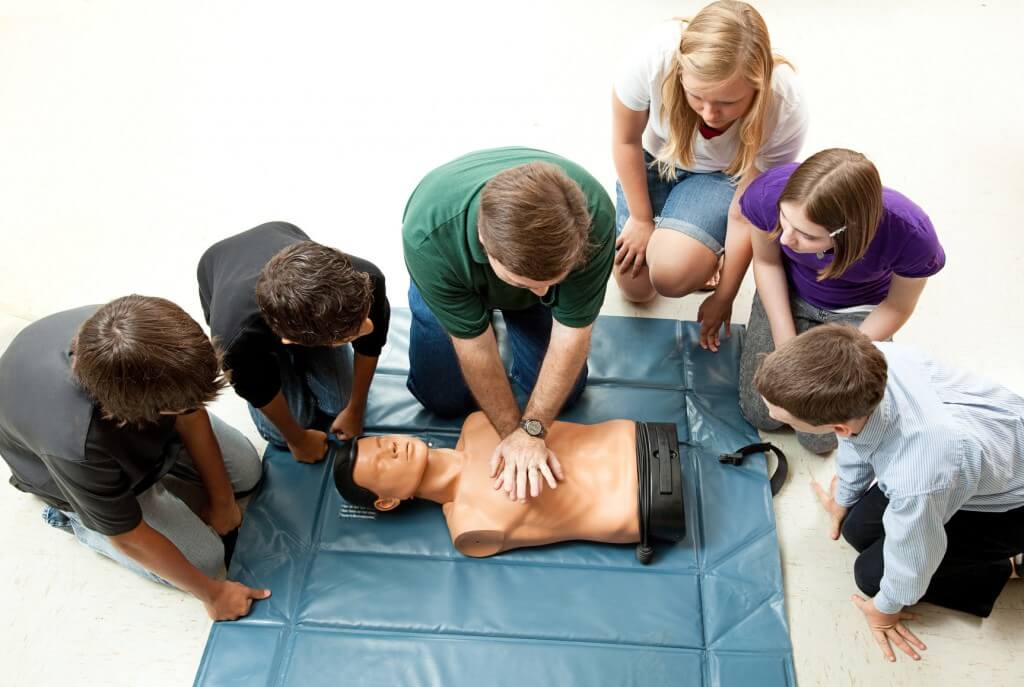Introduction
In today's world, emergency situations can strike at any moment, and being prepared is crucial. One of the essential skills that can conserve lives is cardiopulmonary resuscitation (CPR). Teens represent an important population that can be trained to react effectively in emergency situations. By furnishing them with CPR training, we not only empower them with life-saving abilities however likewise cultivate a culture of readiness and responsibility. This post discovers the importance of mouth-to-mouth resuscitation training for teenagers, what to expect in first aid training courses, and First Aid Course Fremantle exactly how these abilities contribute to their individual growth and neighborhood safety.
Understanding CPR Training for Teenagers: Preparing the Next Generation for Emergencies
What is CPR?
Cardiopulmonary resuscitation (MOUTH-TO-MOUTH RESUSCITATION) is a lifesaving technique utilized during emergencies when somebody's heart beat or breathing has stopped. It includes chest compressions and rescue breaths that help maintain blood flow to crucial body organs up until expert clinical help arrives. Recognizing the fundamentals of mouth-to-mouth resuscitation is crucial for teenagers who may find themselves in emergency situation situations.
Why Do Teens Required CPR Training?
Teens are frequently at social gatherings, sports occasions, or perhaps home events where emergency situations could happen. By finding out mouth-to-mouth resuscitation, they end up being proactive members of their area who can act emphatically throughout crises. The capability to perform mouth-to-mouth resuscitation confidently can transform a possibly terrible scenario into one where lives are saved.
Benefits of First Aid Courses for Teens
First aid training courses do more than simply teach individuals how to provide instant treatment; they instill confidence and reinforce analytic skills. For teenagers, this experience can develop character and encourage leadership high qualities.

- Empowerment: Expertise of emergency treatment and CPR encourages young people. Confidence Building: Efficiently completing a course provides teenagers with a feeling of achievement. Community Service: Educated teenagers can offer in different setups such as colleges or sports teams.
The Framework of CPR Courses for Teens
Course Duration and Format
Most first aid courses are designed to fit within a few hours to a couple of days, depending on the depth of training used. Generally, a standard first aid course will cover:

- Theory: The principles behind first aid techniques. Practical Abilities: Hands-on practice with mannequins or through simulations.
Key Elements Covered in First Aid Courses
Understanding Emergency situation Situations- Recognizing when to ask for help Assessing the scene for safety
- Performing high-grade breast compressions Providing rescue breaths correctly
- Learning how to operate an AED Importance of early defibrillation
- Techniques for grownups, youngsters, and infants Recognizing indicators of respiratory tract obstruction
- Cuts and scrapes Sprains and fractures
The Value of Qualification in First Aid Training
Obtaining Your First Aid Certificate
Completing an emergency treatment course normally finishes in getting a qualification that verifies your abilities. This certificate serves several functions:
- It shows competence in emergency response. Many organizations need qualification for engagement in specific events.
Keeping Certifications Current
Just like any type of life skill, it is necessary to keep your knowledge up-to-date. The majority of organizations recommend renewing certifications every 2 years.
How Young adults Can Get Involved with Emergency Treatment Training
Finding Regional First Aid Courses
Teenagers interested in gaining their first aid certification should consider local recreation center, colleges, or health organizations that supply licensed courses.

Helpful Resources:
- American Red Cross St John Ambulance Local medical facilities or wellness departments
Online vs In-Person Training Options
With innovations in technology, on the internet modules have actually ended up being popular yet might do not have hands-on practice crucial for truly grasping methods. A combined technique-- incorporating online theory with useful sessions-- might be most beneficial.
Creating Recognition Amongst Peers about CPR Training for Teenagers: Preparing the Next Generation for Emergencies
Peer Education Initiatives
Encouraging teenagers to share what they have http://gregorybsiq351.fotosdefrases.com/why-office-safety-training-need-to-consist-of-first-aid-and-cpr-courses actually discovered with their close friends can enhance the influence of training programs:
- Forming study hall focused on emergency situation preparedness. Hosting workshops at institutions or community centers.
Using Social network as a Platform
Teens today are greatly engaged on social media sites platforms; using these networks can help spread out recognition concerning the importance of emergency treatment training amongst peers.
Real-Life Stories That Highlight the Importance of Mouth-to-mouth Resuscitation Educating for Teens
Case Study 1: Conserving a Life at Institution Sports Event
A teen learnt mouth-to-mouth resuscitation was able to save their buddy's life throughout a football suit when he collapsed on the field as a result of heart attack. Their fast thinking permitted them to provide appropriate breast compressions until emergency situation services arrived.
Case Research study 2: Family Members Emergency Situation at Home
Another example entailed brother or sisters who had taken an emergency treatment course with each other. When their more youthful bro unintentionally choked on food throughout supper, they instantly understood what CPR Course Fremantle steps to take because they remembered their training-- leading them effectively with the emergency.
Frequently Asked Concerns (Frequently Asked Questions) About Teenager Mouth-to-mouth Resuscitation Training
1. What age needs to teenagers begin taking mouth-to-mouth resuscitation courses?
A lot of companies advise beginning as early as 12 years old; however, more youthful children can additionally find out standard principles via suitable programs tailored to their age group.
2. How much time does it require to finish an emergency treatment course?
Courses commonly range from 4 hours approximately 16 hours relying on content deepness-- the average being around 8 hours.
3. Are there any type of requirements prior to enrolling?
No formal requirements exist; nevertheless, it's useful if participants have an understanding of basic medical terms.
4. Will certainly I receive qualification after finishing my course?
Yes! Upon successful conclusion and passing any kind of required evaluations you'll obtain an official first aid certificate valid for 2 years.
5. Can I take these training courses online?
Numerous establishments use hybrid layouts incorporating on the internet concept with required useful sessions held in individual-- this is advised by industry standards.
6. Is it essential to restore my qualification periodically?
Yes! Normal recertification guarantees your abilities stay efficient and updated according to current guidelines.
Conclusion
In verdict, equipping teens with expertise regarding cardiopulmonary resuscitation (CPR) with specialized training programs is vital not just for their development yet likewise enhances area security generally. With reliable training sources readily available-- from local programs providing detailed guideline on both standard emergency treatment strategies in addition to innovative life support methods-- it's less complicated than in the past for young people eager concerning making an impactful difference throughout emergencies!
As we progress right into an uncertain globe loaded with obstacles calling for speedy activity-- let us spend our initiatives in the direction of enlightening this next generation so they're prepared not just academically yet additionally practically furnished when encountered against real-life circumstances demanding urgent actions like those requiring prompt interventions such as executing reliable cardiopulmonary resuscitation (MOUTH-TO-MOUTH RESUSCITATION).